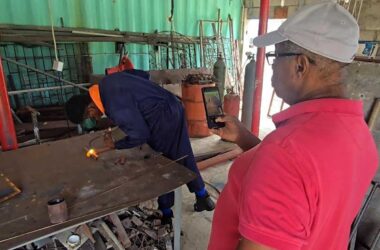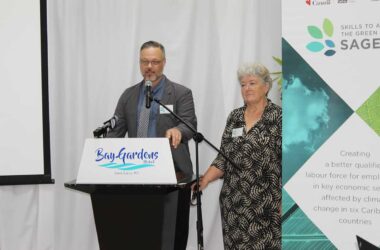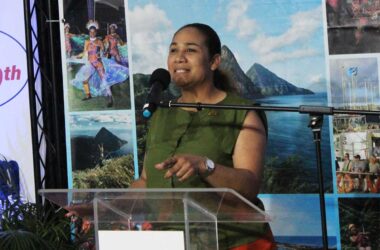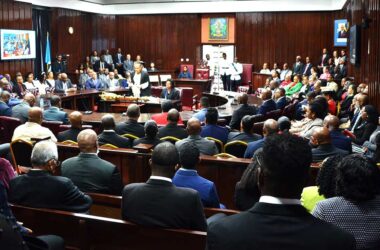
Saint Lucia’s Climate Resilience Journey can be described as a multifaceted progressive pursuit; led by policy shaped by engagement, aiming to drive efforts to integrate climate resilience considerations into national planning and development goals. As the nation continues to plan for and respond to the growing threats of climate change, it actively strengthens its ability to not only bounce back but thrive in the face of these challenges.
Climate resilience is the ability to anticipate, prepare for, and respond to hazardous events, trends, or disturbances related to climate. Improving climate resilience involves assessing how climate change will create new, or alter current, climate-related risks, and taking steps to better cope with these risks.
UNDERSTANDING THE THREATS
Understanding the threats of our drastically changing climate forms a major part of building resilience. Saint Lucia’s geographical location alone makes it highly vulnerable and susceptible to hurricanes, which have become more severe and frequent due to warmer ocean temperatures. Hurricane Beryl barreled through the region this July, breaking records for its strength and how early it formed in a historically quiet part of the rainy season. On the west coast, Soufriere received significant damage to critical infrastructure due to storm surge. Additionally, sea-level rise threatens coastal areas that cradle much of the island’s communities, infrastructure and tourism assets. Changes in rainfall patterns also affect agriculture and water, critical sectors that support the local economy and food security. Earlier this year, the Government of Saint Lucia declared a water emergency due to a prolonged period of no rainfall, alerting citizens to take measures to judiciously conserve this natural resource.
So, what is Saint Lucia doing to respond and build its climate resilience?
Saint Lucia has taken an expansive multi-faceted approach to proactively build climate resilience – for the purpose of this article, the scope of the country’s resilience-building thrust will be captured in three main pillars: Policy, Action and Engagement.
POLICY
Saint Lucia exemplifies its commitment to tackling climate change through robust legal and policy frameworks, demonstrating dedication to building sustainable, integrated approaches that engage stakeholders at every level.
Since becoming a Party to the United Nations Framework Convention on Climate Change (UNFCCC) in 1993, the country has remained committed to reducing greenhouse gas emissions and enhancing resilience. Over the years, Saint Lucia has developed a comprehensive policy framework to guide its climate response, including, among others, key documents like the Climate Change Adaptation Policy, the National Energy Transition Strategy, the National Energy Policy, the Private Sector Engagement Strategy and Climate Change Research Strategy and Policy.
Notably, the 2024 Climate Change Act stands as a landmark achievement, supporting resilience-building efforts by institutionalizing climate action and ensuring the cross-sectoral integration of climate policies. As partner to the Paris Agreement, Saint Lucia submits a Nationally Determined Contribution (NDC) which outlines targets for reducing greenhouse gas emissions (mitigation) and adapting to climate change impacts (adaptation). NDCs are revised and communicated to the UNFCCC every five years. Saint Lucia completed its initial Intended NDC in 2015, completed an update in 2020, and is currently revising for submission in 2025.
Another noteworthy development in Saint Lucia’s climate change policy landscape is the 2018-2028 National Adaptation Plan (NAP). Described as a living policy document, priority sectors communicate their aspirations and needs, outlining detailed strategies to embrace adaptation. This defines readiness of the sectors and places them in a stronger position to secure funding to shift their goals from concept to implementation.
ACTION
Guided by established policy, the Department of Sustainable Development serves as the focal point for climate change matters. This means that the Department is not only the appointed lead to guide/support policy, programs and projects related to climate change; the Department also has a responsibility for monitoring, documenting and reporting on climate action. This work honors Saint Lucia’s commitment to international treaties like the UNFCCC, the Paris Agreement and Kyoto Protocol.
The Department’s thrust includes facilitating, enabling, supporting, mobilizing and coordinating climate action among cross-sectoral stakeholders; empowering them to enhance their level of readiness. Agencies with responsibility for Fisheries, Forestry, Water and Agriculture are just a few that receive support and guidance from the Department of Sustainable Development in their readiness pursuits. The Department also serves as the headquarters for several mitigation and adaptation-relevant initiatives, like the GEF-7 EV Project, the South-East Coast Project and the NAP GCF Readiness Project.
ENGAGEMENT
Saint Lucia’s response has been a stellar demonstration of unified effort, with contributions from all facets of our society. The Department of Sustainable Development sits as chair of the National Climate Change Committee (NCCC). The NCCC comprises a vast selection of representatives from various sectors, including Government ministries, civil society, and the private sector. The NCCC acts as a technical advisory body, guiding the development of climate policies and laws and ensuring cross-sectoral collaboration. Established in 1998 and now formalized by the 2024 Climate Change Act, it marks the country’s commitment to holistic and inclusive engagement to shape climate planning, policy and response. The NCCC plays a crucial role in enhancing resilience by reviewing the status of climate change programming annually, including the implementation and effectiveness of current national policies and recommendations for improvement.
Engagement also includes raising public awareness to deepen the understanding and appreciation of climate change risks, impacts and opportunities. For example, the popularized 2015 1.5 to Stay Alive campaign on looming sea level rise and other climate change impacts in advance of the adoption of the Paris Agreement, is one of many such initiatives in which civil society engagement was prevalent. Other sensitization efforts include ongoing documentaries, public service announcements, exhibitions, debates, youth engagement and school outreach and consultations that aim to impact and change attitudes; ultimately encouraging individuals and communities to explore, embrace and make climate-conscious choices.
LOOKING AHEAD
Climate change is a threat to life as we know it on this small, beautiful island – therefore, it demands a collective response. Everyone has a role to play in protecting the nation’s assets, livelihoods, and cultural heritage. Whether it is a business owner improving drainage systems to better withstand storms, a farmer harvesting rainwater to augment water supply during the dry season, or Government investing in stronger sea barriers and bridges – we all have a role to play in strengthening Saint Lucia’s resilience to climate change impacts.
While challenges persist for our small island developing state, Saint Lucia remains fervent in its commitment to build its climate resilience. With a proven track record of excellence in climate change space and significant progress and milestones to celebrate, the work continues to build a stronger, more adaptive future – for us all.













